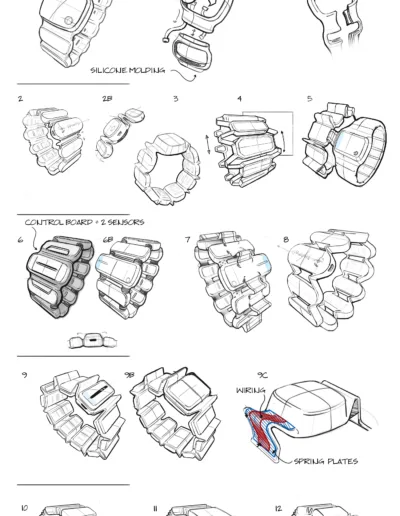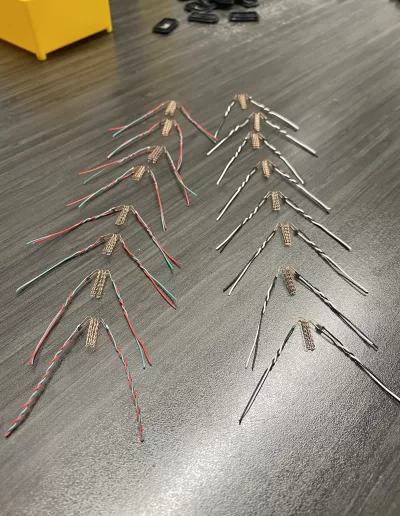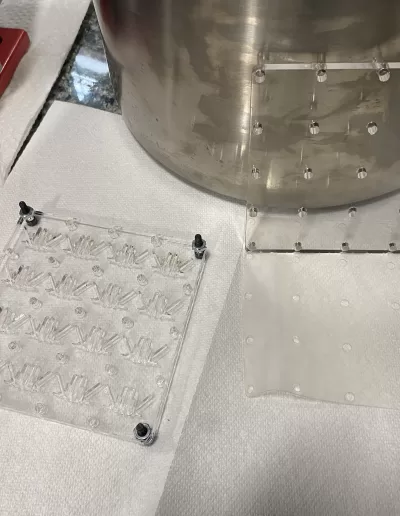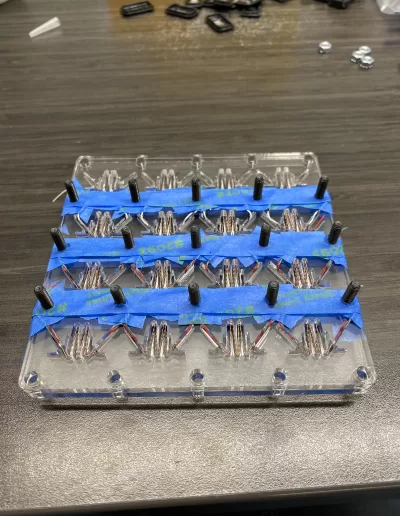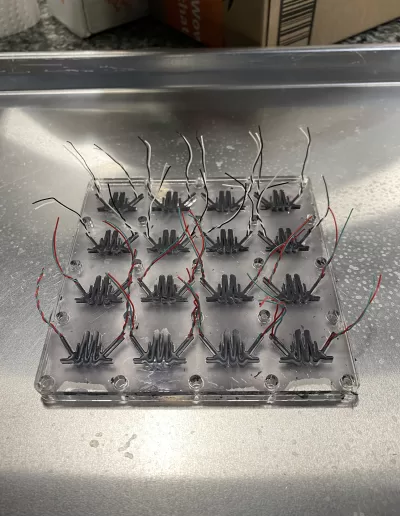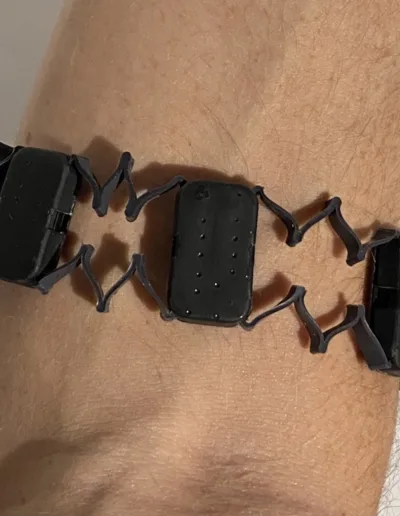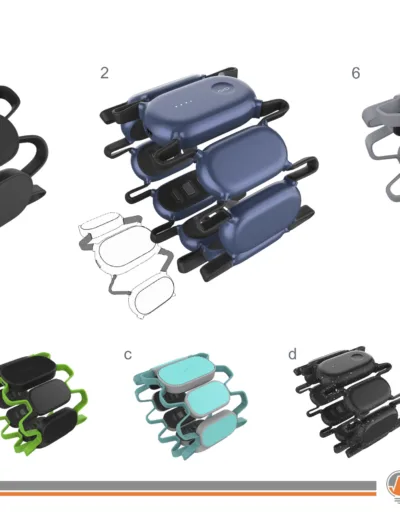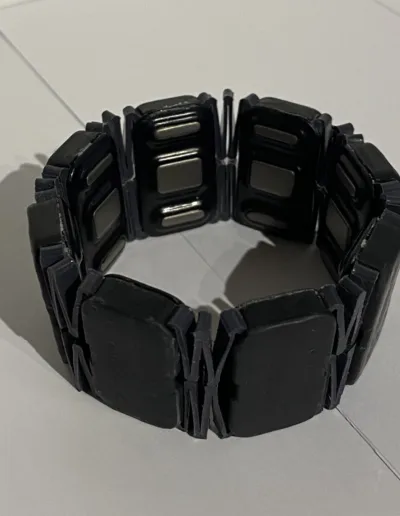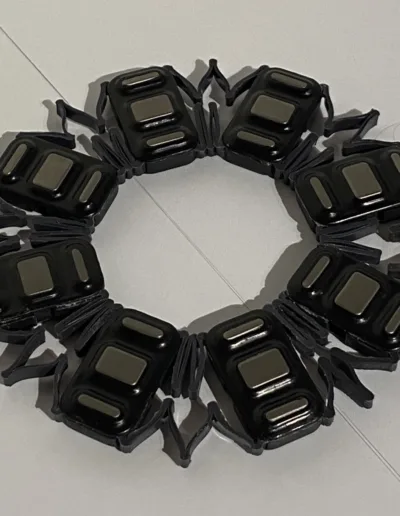Engineering a Smart Biomedical Armband
In the world of prosthetic limb control, precise muscle signal detection can make the difference between natural movement and frustration. Our client, Infinite Biomedical Technologies (IBT), has spent over 25 years pioneering gesture-based control strategies for prosthetic limbs. They partnered with us to design a multi-electrode armband sensor to serve as a biomedical armband for wearers impacted by limb loss.
An amputee wearing IBT electrodes will activate any remaining limb musculature through a full range of different perceived grips or gesticulations. Usually this is done in a clinical setting with the help of a physician. The electrodes then record and pass Electromyographic (EMG) data to a learning algorithm which creates a unique signature for each unique grip. From there, the logic looks for the same EMG signatures in real-time to produce the amputee’s desired grip in their own electromechanical prosthetic limb.
Did You Know:
EMG (Electromyographic) Technology is revolutionizing prosthetic control? EMG sensors detect the electrical signals your muscles produce when they contract or flex. By placing multiple sensors in a biomedical armband, we can create a detailed “map” of muscle activity that helps to translate the intended movements into prosthetic actions.
The Challenge: The Many Considerations of a Biomedical Armband
To accomplish this biomedical feat, there were many intersecting requirements that we would have to keep in mind.
The IBT team was clear on their mission to serve the end user as best as possible. This meant that any designs would need to accommodate a wide range of upper arm sizes and still function despite any stretching of the electrodes. And, of course, as with any wearable medical device, the material selection would be critical.
Creating a biomedical armband that can precisely detect muscle signals while being comfortable for all-day wear is no easy feat. We had solid requirements to follow, though, giving us a very clear sense of direction throughout the project.
Considerations & Requirements
- Design an eight-electrode array that could conform to different arm sizes
- Maintain consistent electrode contact while allowing for a reasonable range of movement
- Protect delicate internal electronics while still allowing for expansion
- Ensure the entire system was bio-compatible and cleanable
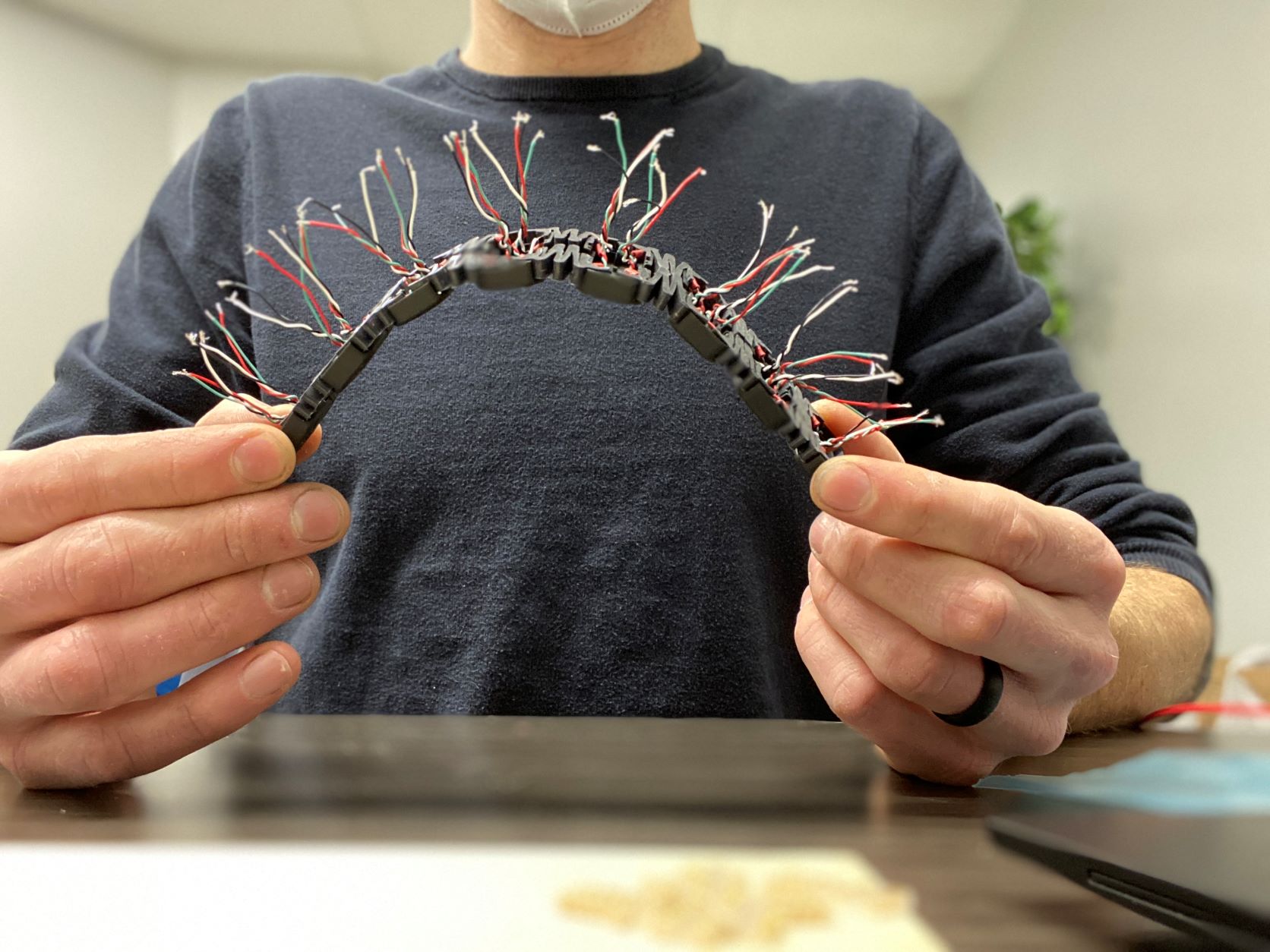
Designing and Prototyping a Biomedical Armband
Our first step was to determine the optimal way to arrange eight electrodes around the arm while still allowing for size adjustment. Unlike a traditional watch or armband that adjusts at a single point, we needed uniform expansion between each electrode to maintain consistent signal quality.
Material Selection for Wearable Medical Devices
For a device like this that would need to make direct skin contact, material selection is always crucial. We focused our efforts on two primary materials, silicone and urethane.
1. Silicone
- Excellent elongation properties
- Proven history in biomedical applications
- Superior chemical compatibility
- Easy to mold
- Cost-effective
2. Urethane
- Strong tear resistance
- Available in medical grades
- Good chemical compatibility
- Excellent moldability
- Budget friendly
Creating a Reliable, Manufacturable Biomedical Armband
At Root3 Labs, we have extensive experience laser cutting and 3D printing custom low-cost molds for rubber casting prototype parts in low quantities. In this case, several different styles of silicone and urethane rubber interconnects were cast in custom molds. From there, the different solutions were tested by hand for their ability to perform as a flexible housing for electrical interconnects, as well as a viable rubber armband. To save our partner the cost of injection mold tooling, we 3D printed components in-house and laser-cut our own acrylic. We then went through several rounds of prototype iterations made from real silicone and urethane in different durometers and grades.
Through multiple iterations and careful testing, we developed a biomedical armband alongside the IBT team that met all of their requirements:
- Uniform electrode contact across various arm sizes
- Protected electronics with flexible interconnects
- Biocompatible materials suitable for medical use
- Cost-effective manufacturing process
- Easy cleaning and maintenance for the end user
Highlights
DESIGN FOCUS
- User Experience and 99% Percentile Considerations
- Reduced Size and Complexity
- Patterned Subcomponent Design for Cost Savings
- Embedded Flexible Electronics
- Design for Manufacturing
FABRICATION
- Material Selection
- Rubber Molding
- Laser Cut Jigs and Mold Patterns
- Potted Flexible Conductors
Developing wearable medical devices requires careful considerations of user needs, regulatory requirements, and manufacturing processes. Whether you’re working on a biomedical armband or another innovative medical device, our team can help turn your idea into a reality.

